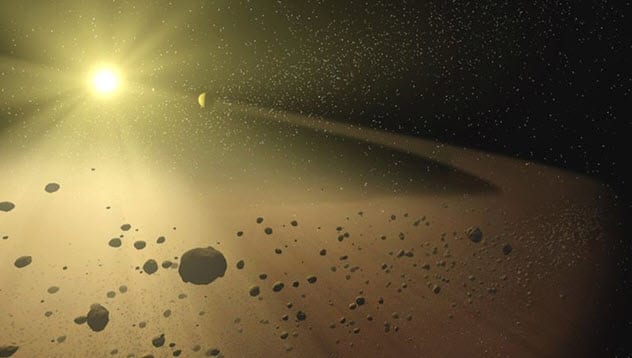Hello ladies and gents this is the Viking telling you that today we are talking about
Asteroid Mining
We live in a world of electronic gadgets, mass global transport, and a growing population that desires such things. Gold, platinum, nickel, iron . . . you name it, and it’s probably in your pocket or parked in your driveway right now. These resources are finite on Earth, and we’re going through them faster with every technological advancement.
However, the same resources are almost limitless in space. Let’s take the example of platinum. This metal is used in things such as cardiac pacemakers and as a catalyst for turning crude oil into something we can use in fuel and manufacturing.Platinum is considered rare on Earth. However, the asteroid belt in our solar system alone contains a billion times more platinum than is found here on Earth, and that’s not even including other resources.
Water Is The Most Valuable Resource
It sounds odd, doesn’t it? You’re around enough rare metals to crush the Earth, yet the one that prospectors are most eager to find is water. Well, water does fuel life. However, they’re not looking for life but rather fuel.When broken down into its basic components, water is hydrogen and oxygen. This separation can be achieved via an electrical catalyst with onboard or external equipment.
Once broken down, the components of water can be repurposed as electrical energy to support devices such as life-support systems and fuel cells. If left as water, it can be a refreshing beverage.NASA plans to set up depots in space. They would extract water from nearby sources, carry out the catalyst process, and then siphon it to the docked craft. Essentially, they would be petrol stations in space.
New Mining Methods And Equipment
The equipment and techniques that we have developed to mine on Earth won’t work when dealing with moving objects in a low-gravity environment. Depending on their composition, they are either very delicate or very hard to mine.The delicate asteroids are known as C-type (carbonaceous chondrite) which have high water concentrations.
They could be mined with a swarm of bots with barbed feet. Once latched, the bots would extract water and any other minerals and then return to base. These asteroids are so delicate that the bots wouldn’t even need to drill but simply scrape along the surface.The asteroids that are hard to mine are known as M-type (metallic). They present a bigger challenge because they are essentially hunks of solid flying metal. It may be simpler to magnetically drag them closer to Earth for processing.
It Would Lead To Us Colonizing The Solar System
The asteroids dragged closer to Earth would be processed in space, on the Moon, or on other planets. This would allow these resources to be refined before they were returned to Earth. More importantly, they could be used to build new colonies and sustain existing ones. The industries surrounding asteroid mining would create the first permanent human populations outside Earth.
Rick Tumlinson, chairman of Deep Space Industries, sums it up: “We will only be visitors in space until we learn how to live off the land there.” MicroGravity Foundry has developed heavy-duty 3D printers that can function in zero gravity. These can be used to build communication devices, solar panel power stations, and, as more resources are harvested, whole colonies.
The Market Values Are Insane
Distances in space are measured in numbers that the human brain can’t really comprehend and put into perspective. They’re so large that the distance to an object outside our solar system is computed in light-years to keep it manageable. A light-year measures how far light travels in one year, which is approximately 9.46 trillion kilometers (5.88 trillion mi).Within our solar system, distances are measured in astronomical units (AU).
One AU is the average distance from the Earth to the Sun, which is approximately 150 million kilometers (93 million mi). That’s a smaller unit but still hard to comprehend.Now try to imagine one quintillion dollars (we’ll abbreviate “quintillion” as “qt”). That’s one million trillions, which is enough money to buy the entire world economy and not even make a dent in your net worth.
Messalina, the “cheapest” large minable asteroid, has been valued at a measly $1.07qt. The most expensive is Davida at $26.99qt. That doesn’t include all the smaller minable asteroids outside the top 50, whose total number of zeroes would most likely take us over the word limit for this section!
and as always have a chilled day from the Viking

Comments
Post a Comment